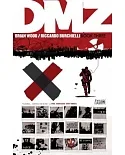The Skira Dictionary of Modern Decorative Arts spans, under nearly one thousand headings, a period defined by two crucial events in the intricate history of the transition from
artisanal production of the decorative arts to industrial design: the London World Fair, that opened in 1851 in Joseph Paxton's Crystal Palace, and the E42, designed for Rome and that, owing
to the Second World War, was never carried out. Practically a century of history and of an artistic evolution that, arisen from the agelong, consummate technical, material and creative legacy
of the European art craftsmanship of the preceding centuries, also took into account industrial production and the radical changes of society and taste that occurred in Europe and the United
States between the second half of the nineteenth century and the 1950's
The Dictionary, enhanced by over three hundred illustrations, provides information, critical commentaries, historical data about artists, designers, manufactories, laboratories,
techniques and materials connected with glass and crystal, silverware and jewellery, processed metals, textiles and furnishings, pottery and porcelain, furniture, offering an appendix
featuring a concise bibliography raisonné and a repertory of trademarks, related to pottery production, of of signatures and trademarks of artists working in the various fields.
Perusual of the individual headings and the illustrations allows to review the history and the evolution of the decorative arts in Europe and the Unites States from Biedermeier to the
eclectic and historicist taste, from international modernism, with its different Secessions and liberty versions, to art deco, from Novecento style up to industrial design.





















